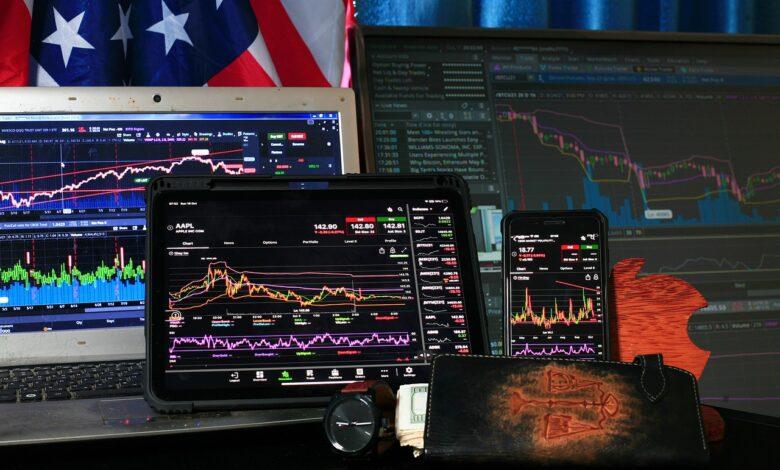Secure Your Crypto – Audit Your Portfolio Today

In the rapidly evolving landscape of cryptocurrency, the allure of digital assets is often accompanied by an unsettling reality: the ever-present threat of security breaches and potential losses. As we delve into the intricacies of conducting a security audit of your crypto portfolio, it becomes imperative to recognize that evaluating the safety of your cryptocurrency holdings is not merely a precaution; it is an essential practice for anyone invested in this volatile market. The steps outlined in this guide will equip you with the knowledge to perform a thorough assessment, ensuring that your assets remain safeguarded against the myriad of risks they face.
When we speak of a security review, we are not just discussing a checklist of actions to take but rather a comprehensive approach to understanding the vulnerabilities inherent in your digital currency holdings. It is crucial to carry out this evaluation with both diligence and foresight, as each decision made impacts the overall integrity of your portfolio. By adopting a methodical framework for assessing and improving the security measures surrounding your cryptocurrency assets, you can cultivate a resilient strategy that withstands external threats.
This article aims to explore the various ways to carry out a crypto portfolio security audit, highlighting key strategies that will guide you through the process. From understanding best practices in securing wallets to recognizing the importance of ongoing vigilance in monitoring transactions, each step plays a pivotal role in fortifying your financial future. By embracing these principles with an analytical mindset and a passion for safeguarding what you have built, you will not only enhance the robustness of your investments but also develop a deeper appreciation for the evolving world of digital currencies.
Importance of Security Audits in Cryptocurrency Holdings
In an era where digital assets have become a cornerstone of modern finance, the importance of conducting security audits of your cryptocurrency portfolio cannot be overstated. With the proliferation of cyber threats and the potential for significant financial loss, ensuring the safety of your holdings is paramount. A thorough audit serves not only as a safeguard against theft but also as a means of instilling confidence in your investment strategy. By systematically evaluating the security of your digital currency assets, you can identify vulnerabilities and implement measures to protect your portfolio from potential risks.
To embark on the journey of evaluating the safety of your crypto assets, one must first understand the steps involved. Begin with a comprehensive inventory of all digital currencies held within your portfolio. This includes assessing which exchanges or wallets house these assets and understanding their respective security protocols. Following this, engage in a detailed analysis of each platform’s history regarding security breaches. This information is crucial; platforms with a track record of vulnerabilities may pose a higher risk to your investments.
Performing an effective security assessment requires a multi-faceted approach. Start by examining the types of wallets used for storing your cryptocurrency. Hardware wallets, for instance, provide an added layer of safety compared to software wallets, which can be more susceptible to hacking attempts. Furthermore, ensure that two-factor authentication (2FA) is enabled across all accounts associated with your digital currency holdings. This additional step significantly enhances security by requiring not just a password but also another form of verification.
In addition to reviewing wallet security, consider assessing the overall structure of your portfolio. Diversification is not only vital for investment returns but also plays a role in risk management. An over-concentration in a single cryptocurrency or exchange can expose you to greater risks. To carry out a thorough review, analyze the distribution of assets across different currencies and platforms. This strategic evaluation can help mitigate potential losses from unforeseen market fluctuations or exchange failures.
There are various ways to carry out a crypto portfolio security review effectively. Engage with reputable third-party services that specialize in crypto audits, as they bring expertise and objectivity to the process. These firms often employ advanced tools and methodologies to identify weaknesses in your security framework that you may overlook. Additionally, consider participating in community forums where experienced investors share insights and best practices for securing their portfolios.
In conclusion, the imperative for regular security audits in managing your cryptocurrency investments cannot be ignored. By following structured steps for evaluating the safety of your holdings, performing rigorous assessments, and leveraging external expertise when necessary, you can enhance the resilience of your portfolio against evolving threats. In this ever-changing landscape of digital currencies, proactive measures are essential for safeguarding not just financial investments but also personal peace of mind in an increasingly complex world.
Identifying Common Security Risks in Your Crypto Portfolio
In the ever-evolving landscape of digital currency, identifying common security risks becomes a pivotal task for anyone looking to hold cryptocurrency assets. To begin with, one must recognize that the decentralized nature of cryptocurrencies, while providing numerous advantages, also exposes investors to unique vulnerabilities. These may include phishing attacks, where malicious actors impersonate legitimate platforms to extract sensitive information, or the perilous risk of inadequate password management. Additionally, software vulnerabilities and the potential for hardware failures can significantly jeopardize the safety of your holdings. Understanding these risks is the first step in establishing a robust security framework for your crypto portfolio.
Once you have pinpointed the potential threats, it is essential to explore effective ways to carry out a comprehensive security review of your cryptocurrency assets. A systematic audit should involve assessing both the technology you employ and your personal security practices. Begin by evaluating the wallets used to store your digital currencies; hardware wallets generally offer superior protection compared to online solutions. Furthermore, enabling two-factor authentication (2FA) is a crucial step that adds an additional layer of defense against unauthorized access. Regularly updating software and monitoring transaction histories are also integral components of a thorough security review.
Performing a detailed security assessment of your cryptocurrency assets requires a methodical approach. Start by listing all digital currencies in your portfolio alongside their respective storage methods. This will allow you to analyze which assets are more vulnerable due to their storage conditions. For example, if you hold a significant amount of funds on an exchange rather than in a secure wallet, you may be exposing yourself to substantial risk should that exchange suffer a breach. Employ tools that can help track and manage your portfolio’s performance while simultaneously assessing their inherent security features.
Evaluating the safety of your digital currency holdings should not be a one-off exercise but rather an ongoing process. Set regular intervals–perhaps quarterly or bi-annually–to conduct these evaluations and adjust your security measures as necessary. As the cryptocurrency market shifts and new threats emerge, maintaining vigilance is critical. Engage with community forums or subscribe to industry newsletters that provide updates on recent vulnerabilities and best practices for securing your investments.
In addition to self-assessment, consider leveraging third-party services that specialize in conducting audits for crypto portfolios. These professionals can offer insights that may be overlooked during individual reviews and provide recommendations tailored to your specific situation. They often utilize advanced analytics tools that can evaluate transaction patterns and detect anomalies indicative of potential breaches or fraud attempts.
Ultimately, safeguarding your cryptocurrency assets requires diligence and proactive engagement with evolving security practices. By systematically identifying risks, implementing robust protocols, and remaining adaptable to new threats, you bolster the integrity of your investment portfolio. Remember that in the dynamic world of digital currencies, knowledge is not only power; it is also your best defense against the myriad challenges that lie ahead.
Steps to Audit Your Crypto Portfolio
Conducting a security audit of your cryptocurrency portfolio is a critical endeavor in today’s digital landscape. The process begins with evaluating the current state of your assets. This involves identifying all the cryptocurrencies you hold and understanding their respective risks. By compiling a comprehensive list of your holdings, you not only gain clarity on what is at stake but also set the foundation for conducting a thorough assessment. Each currency possesses unique characteristics and vulnerabilities, and recognizing these differences is essential for effective risk management.
Once you have outlined your portfolio, the next steps involve performing a detailed review of the security measures in place for each asset. This includes examining the wallets used for storing your cryptocurrencies–whether they are hardware, software, or paper wallets–and assessing their safety features. For instance, hardware wallets are generally considered more secure due to their offline nature, while software wallets can expose users to greater risks if not properly secured. Evaluating the methods used for accessing these wallets, such as two-factor authentication or multi-signature setups, further enhances your understanding of potential vulnerabilities.
In addition to evaluating storage solutions, it is crucial to carry out an analysis of the exchanges where you may have bought or sold your assets. Ensuring that these platforms employ robust security protocols can significantly affect the safety of your investments. Researching their history regarding hacks or breaches will provide insight into their reliability. Furthermore, reviewing the steps these exchanges take in case of a security incident will help you understand the level of protection offered for your holdings.
Finally, incorporating regular assessments into your routine is vital for maintaining the safety of your cryptocurrency portfolio over time. Establish a timeline for periodic reviews, allowing for adjustments in response to market changes or emerging threats. Staying informed about new security practices and technologies is equally important; as the landscape evolves, so too must your strategies for safeguarding your digital currency holdings. By committing to this ongoing evaluation process, you not only protect your assets but also enhance your understanding of the complexities inherent in the world of cryptocurrency investment.
Conclusion: Ensuring the Security of Your Crypto Portfolio
In the ever-evolving landscape of digital currency, securing your cryptocurrency assets is not merely a precaution; it is an essential practice. With the proliferation of innovative technologies and the increasing sophistication of cyber threats, understanding how to effectively perform a security audit of your crypto portfolio becomes paramount. The delicate balance between opportunity and risk necessitates that you continually evaluate the safety of your holdings.
As we have explored throughout this article, there are myriad ways to carry out a comprehensive review of your security protocols. From implementing robust password management systems to utilizing hardware wallets, the steps for evaluating the safety of your digital currency holdings are both diverse and critical. Each measure you take in fortifying your assets contributes to a more secure future for your investments.
Best Practices for Ongoing Security
- Regular Audits: Conduct periodic assessments to identify any vulnerabilities in your portfolio.
- Two-Factor Authentication: Always enable this feature for added security on exchanges and wallets.
- Educate Yourself: Stay informed about new threats and evolving best practices in cryptocurrency security.
- Diversify Storage: Utilize a mix of hot and cold wallets to safeguard your assets against potential breaches.
In conclusion, performing a thorough security assessment of your cryptocurrency assets is not a one-time event; it is an ongoing commitment that requires vigilance, adaptability, and a proactive mindset. By embracing these best practices and regularly reviewing your security measures, you can significantly mitigate risks and empower yourself in this dynamic digital realm. Remember, in the world of crypto, knowledge is as valuable as the currency itself–so equip yourself with the tools and insights needed to protect what is rightfully yours.





